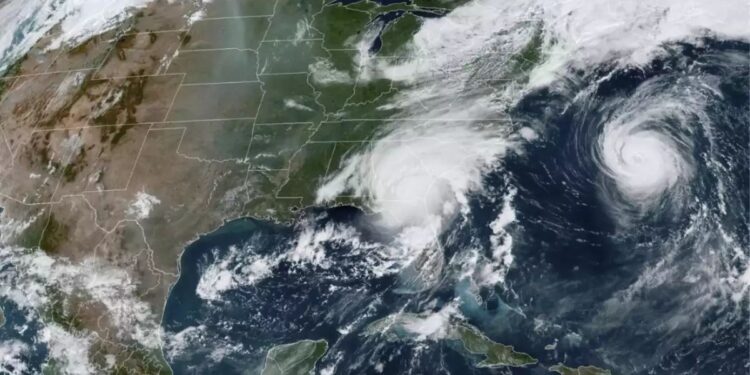The 2024 Atlantic hurricane season is set to begin on June 1, with Alberto, Beryl, and Chris taking the lead as the first storm names.
When sustained winds of a tropical storm reach 39 mph, it earns the distinction of being named. However, it only becomes a hurricane when its winds reach a minimum speed of 74 mph.
According to historical weather records spanning from 1991 to 2020, an average Atlantic hurricane season typically sees around 14 tropical storms, with seven of them intensifying into hurricanes.
According to a recent forecast by hurricane experts from the University of Pennsylvania, we can expect an exceptionally active season with the possibility of up to 33 named storms.
Here is the list of names for the 2024 Atlantic hurricane season:
Storm names are assigned in alphabetical order, with each new storm receiving the next name on the list. However, the names for storms do not include Q, U, X, Y, or Z due to the limited availability of suitable names starting with those letters.
Learn the correct pronunciation of all the hurricane names for the year 2024.
-
- Alberto
- Beryl
- Chris
- Debby
- Ernesto
- Francine
- Gordon
- Helene
- Isaac
- Joyce
- Kirk
- Leslie
- Milton
- Nadine
- Oscar
- Patty
- Rafael
- Sara
- Tony
- Valerie
- William
If all 21 names are utilized this year, there exists a supplementary list of 21 names that will be employed following William. The following compilation is provided by the World Meteorological Organization:
-
- Adria
- Braylen
- Caridad
- Deshawn
- Emery
- Foster
- Gemma
- Heath
- Isla
- Jacobus
- Kenzie
- Lucio
- Makayla
- Nolan
- Orlanda
- Pax
- Ronin
- Sophie
- Tayshaun
- Viviana
- Will
Why – and how – do hurricanes get names?
Before the introduction of storm names, hurricane forecasters were faced with the challenge of identifying storms by providing their geographical coordinates, such as “the storm located 500 miles east-southeast of Miami.” However, this method proved to be problematic as the storm’s position would often shift within a matter of hours.
Describing multiple storms simultaneously made the task even more challenging, as it became difficult to differentiate between them.
In 1953, the United States made a significant change by adopting female names for hurricanes. However, it wasn’t until 1979 that both male and female names started to be used. Since then, a pattern has been established where the names of hurricanes alternate between male and female.
Eastern Pacific hurricane names
In the eastern Pacific Ocean, there exists a distinct list dedicated to tropical storms and hurricanes.
-
- Aletta
- Bud
- Carlotta
- Daniel
- Emilia
- Fabio
- Gilma
- Hector
- Ileana
- John
- Kristy
- Lane
- Miriam
- Norman
- Olivia
- Paul
- Rosa
- Sergio
- Tara
- Vicente
- Willa
- Xavier
- Yolanda
- Zeke
Eastern Pacific hurricanes rarely affect the United States directly. However, last year, Hurricane Hilary caused significant damage in parts of California and the Southwest. It is worth noting that the eastern Pacific hurricane season starts on May 15, which is more than two weeks earlier than the Atlantic season.
Central Pacific hurricanes have their own distinct set of names, as they have the potential to impact Hawaii. Furthermore, there are separate lists for typhoons in the western Pacific, as well as tropical cyclones in Australia and the Indian Ocean.










